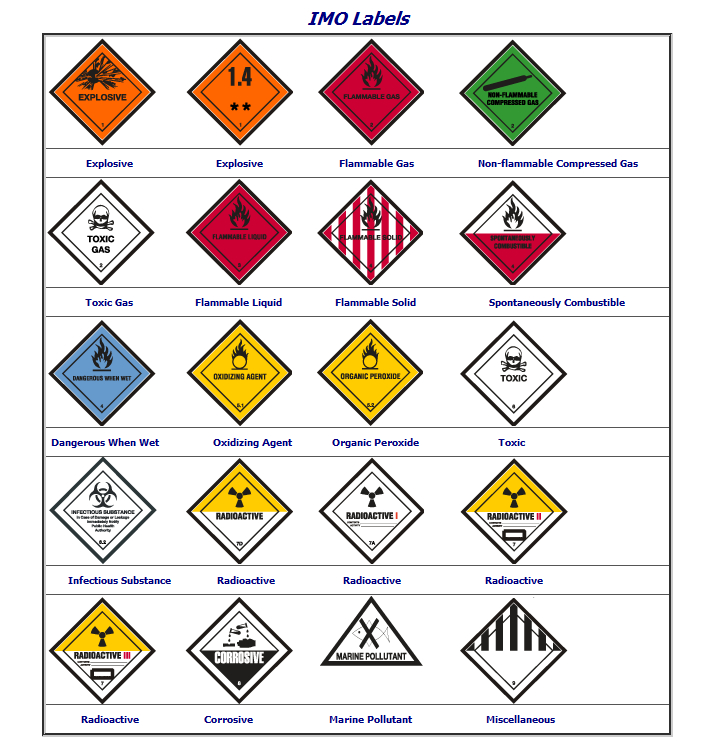|
IMO Class |
IMO Description |
| Class 1 | Explosives |
| 1.1 | Substances and articles which have a mass explosion hazard. |
| 1.2 | Substances and articles which have a projection hazard but not a mass explosion hazard. |
| 1.3 | Substances and articles which have a fire hazard and either a minor blast hazard or a minor projection hazard or both, but not a mass explosion hazard. |
| 1.4 | Substances and articles which present no significant hazard. |
| 1.5 | Very insensitive substances which have a mass explosion hazard. |
| 1.6 | Extremely insensitive articles which do not have a mass explosion hazard. |
| Class 2 |
Gases: Compressed, Liquefied or Dissolved under Pressure |
| 2.1 | Flammable gases |
| 2.2 | Non-Flammable gases |
| 2.3 | Toxic gases |
| Class 3 |
Flammable Liquids |
| Class 4 |
Flammable Solids or Substances |
| 4.1 | Flammable solids |
| 4.2 | Substances liable to spontaneous combustion |
| 4.3 | Substances which, in contact with water, emit flammable gases. |
| Class 5 |
Oxidizing Substances (agents) and Organic Peroxides |
| 5.1 | Oxidizing substances (agents) by yielding oxygen increase the risk and intensity of fire |
| 5.2 | Organic peroxides – most will burn rapidly and are sensitive to impact or friction |
| Class 6 |
Toxic and infectious Substances |
| 6.1 | Toxic substances |
| 6.2 | Infectious substances |
| Class 7 |
Radioactive Substances |
| Class 8 |
Corrosives |
| Class 9 |
Miscellaneous dangerous substances and articles * |
| MHB |
Materials hazardous only in bulk ** |
| * Marine pollutants which are not of an otherwise dangerous nature are listed in class 9 | |

